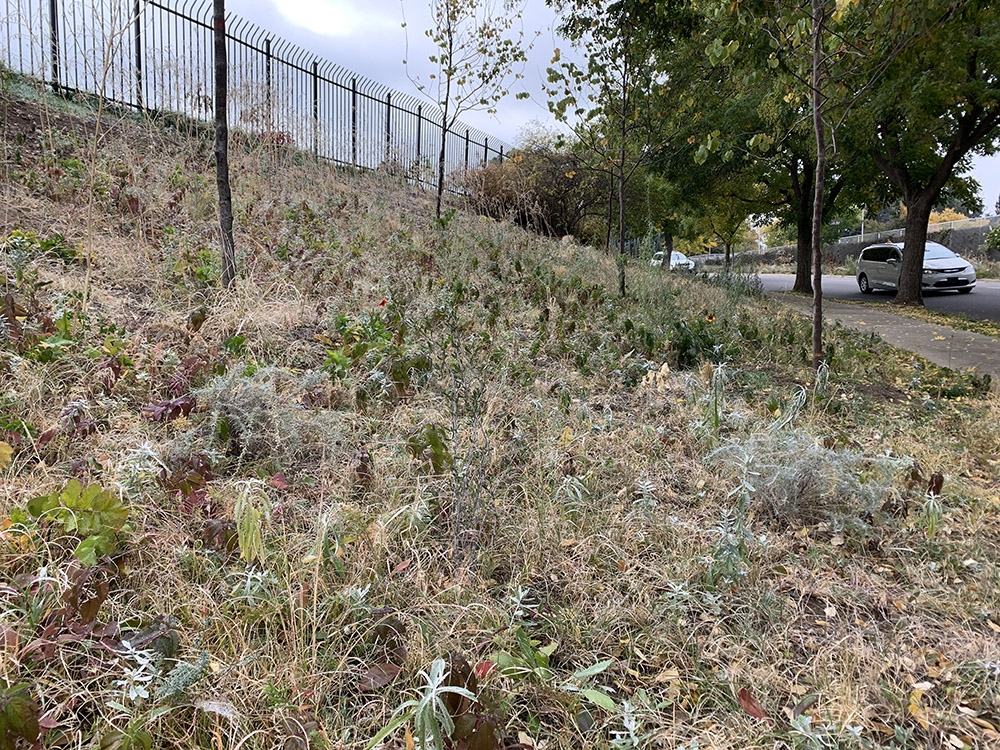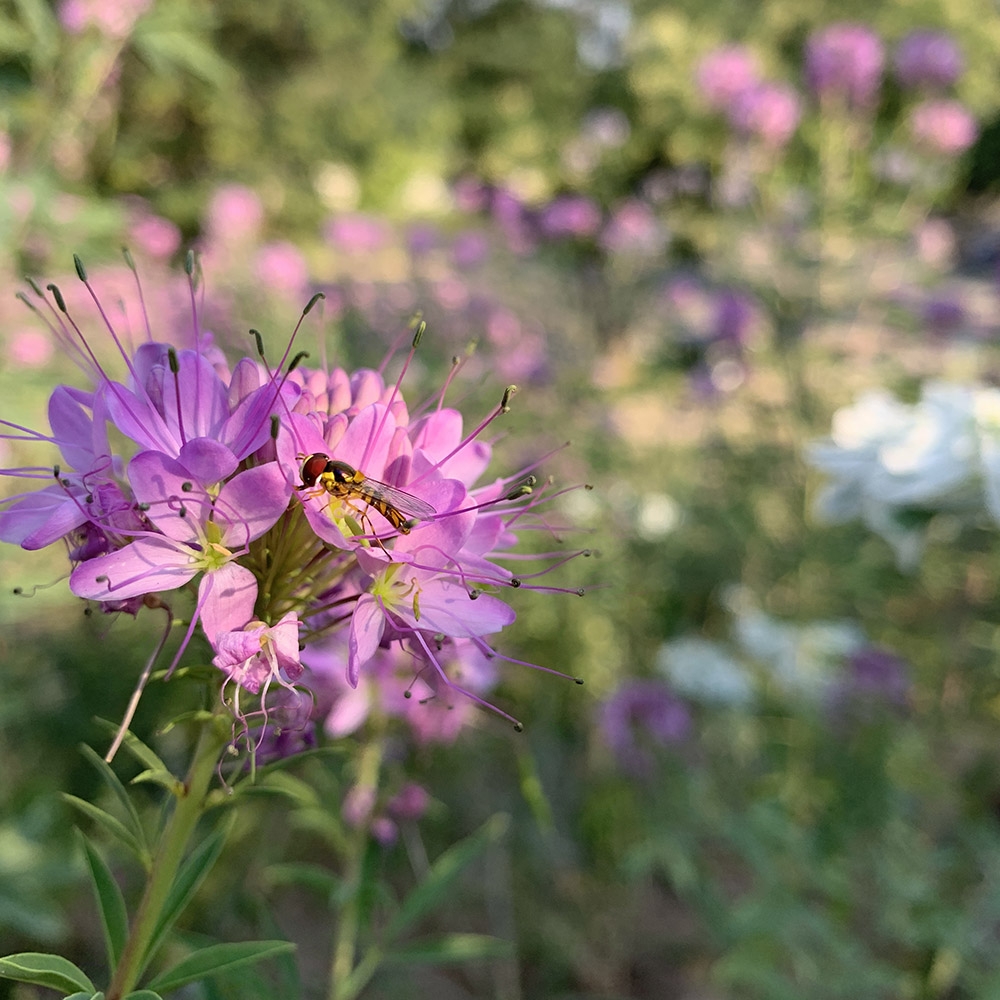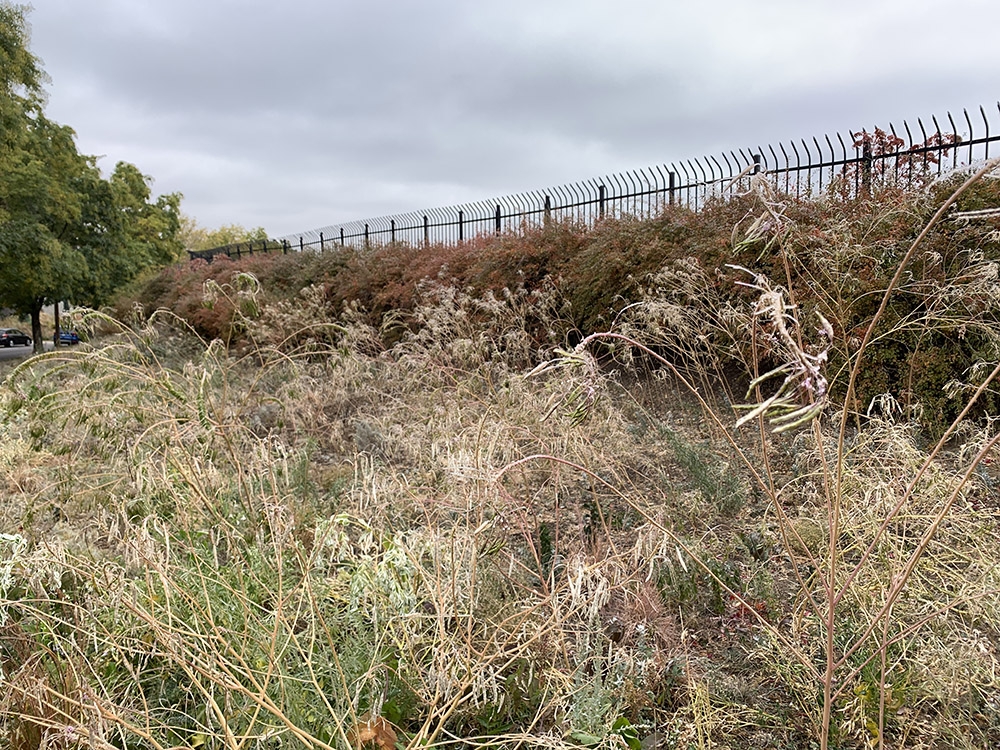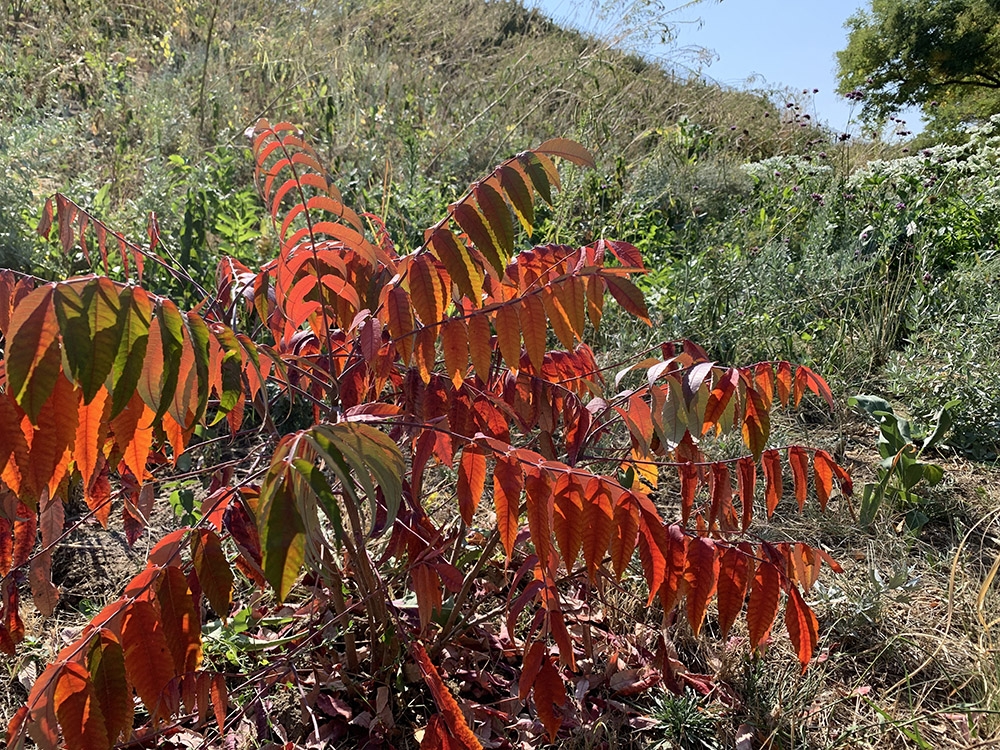East Josephine: End of A Year
There were moments of sheer exasperation under the unrelenting summer sun. The months of 90-degree temps without significant rainfall were very hard on the young, establishing plants of the East Josephine Streetscape, not to mention the horticulturists and volunteers that poured their hearts into the garden for months. But there were also moments of unbelievable beauty and hope, like when a week of cooler weather allowed the ground to retain just a bit more moisture, helping a whole new crop of grasses germinate. Or when the morning light caught the thousands of edges of this brand-new prairie in just the right way, causing the garden to sigh in silver.
The East Josephine Streetscape is an experiment in establishing a garden that combines the aesthetics of captivating garden design, like those embodied in the Perennialist Movement. Techniques employed are commonly used in restoration ecology, like dense, repeat seeding and closed-loop organic material cycling. However, time, or shifting our understanding of time, might be our most important tool in stewarding this space.
Gardens, especially those grown from seed, with small plants or with certain limiting factors, like low-water input, can take longer to develop than we’d like. The plants in these gardens can often be tougher because of these challenges, growing denser or more slowly, perfecting their physiology for the site, and showing resiliency by taking advantage of seasonal climate fluctuations. We need to shift our vision to plant-time to fully appreciate the potential of a garden that is growing under the direction of the plants, as much as our own.
Although some species, like the annual Cleome serrulata, exploded into life, generally, the growth and plantings this year hinted at the future. Often, a solitary bloom or leaf bursting into fall color betrayed the dozens of others still developing, speckled throughout the bed. Still, the potential is there. Andrew Wintergerst, the seasonal gardener who oversaw the space, almost singlehandedly planted over four thousand plants. By the end of summer, enchanting forms were emerging from the drifts of shrubs and perennials planted throughout the hillside, nestled among thousands of other plants germinating from seed.
This autumn and winter we’ll continue seeding. Along with adding new species, we’ll try to keep as much of the seed that developed in the garden onsite to encourage the positive feedback loop of life. Next spring, we’ll witness the tapestry of the garden continue to stitch itself together—as slowly and strongly as it needs to.
Gallery





Add new comment